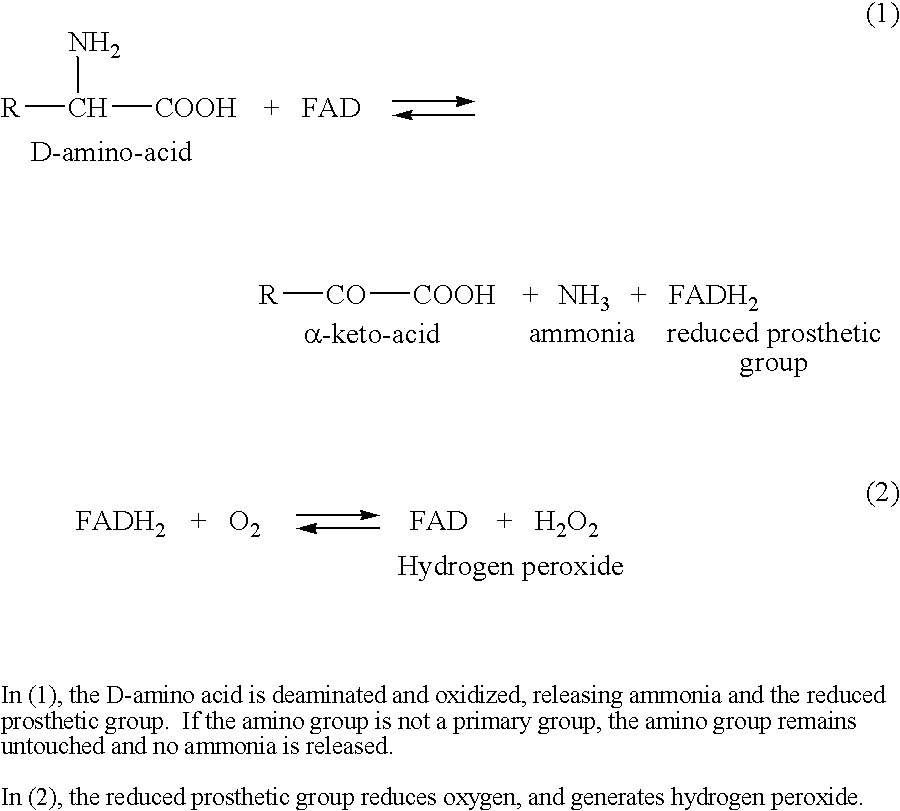Identification and characterization of racemases, definition of protein signatures, and a test for detecting D-amino acid and for screening molecules capable of inhibiting the activity of racemase, especially proline racemase
a technology of racemases and protein signatures, applied in the field of identification and characterization of racemases, can solve the problems of difficult detection of d-amino acids in living organisms, not yet approved an accurate blood test for screening donor blood samples, and difficult to evaluate the efficacy of treatment in indeterminate or chronic phases
- Summary
- Abstract
- Description
- Claims
- Application Information
AI Technical Summary
Benefits of technology
Problems solved by technology
Method used
Image
Examples
example 1
Cloning and Automated Sequencing
[0142] Lambda phage and plasmid DNA were prepared using standard techniques and direct sequencing was accomplished with the Big dye Terminator Kit (Perkin Elmer, Montigny-le Bretonneux, France) according to the manufacturer's instructions. Extension products were run for 7 h in an ABI 377 automated sequencer. Briefly, to obtain the full length of the TcPRAC gene, 32P-labeled 239 bp PCR product was used as a probe to screen a T. cruzi clone CL-Brener lamba Fix II genomic library (see details in (13)). There were isolated 4 independent positive phages. Restriction analysis and Southern blot hybridization showed two types of genomic fragments, each represented by 2 phages. Complete sequence and flanking regions of representative phages for each pattern was done. Complete characterization of TcPRACA gene, representing the first phage type, was previously described in (13). Full sequence of the putative TcPRACB gene, representing the second phage type was...
example 2
Chromoblots
[0143] Epimastigote forms T. cruzi (clone CL Brener) are maintained by weekly passage in LIT medium. Agarose (0.7%) blocks containing 1×107 cultured parasites were lysed with 0.5 M EDTA / 10 mM Tris / 1% sarcosyl pH 8.0, digested by proteinase K and washed in 10 mM Tris / 1 mM EDTA, pH 8.0. Pulsed field gel electrophoresis (PFGE) was carried out at 18° C. using the Gene Navigator apparatus (Pharmacia, Upsala, Sweden) in 0.5×TBE. Electrophoresis were performed, as described in (14). Gels were then stained with ethidium bromide, photographed, exposed to UV light (265 nm) for 5 min and further blotted under alkaline conditions to a nylon filter (HybondN+, Amersham Life Science Inc., Cleveland, USA). DNA probe, obtained by PCR amplification of TcPRACA gene with Hi-45 (5′ CTC TCC CAT GGG GCA GGA AAA GCT TCT G 3′) [SEQ ID NO:5] and Bg45 (5′ CTG AGC TCG ACC AGA T(CA)T ACT GC 3′) [SEQ ID NO:6] oligonucleotides (as described in (13)) was labelled with αdATP32 using Megaprime DNA labell...
example 3
Plasmid Construction and Protein Purification
[0144] TcPRACA gene fragment starting at codon 30 was obtained by PCR, using Hi- and Bg45 primers, and cloned in frame with a C-terminal six-histidine tag into the pET28b(+) expression vector (Novagen-Tebu, Le Perray en Yvelines, France). The fragment encoding for the TcPRACB consisted of a HindIII digestion of TcPRACB gene fragment obtained by similar PCR and cloned in frame with a C-terminal six-histidine tag into the pET28b(+) expression vector. Respective recombinant proteins TcPRACA and TcPRACB were produced in E. coli BL21 (DE3) (Invitrogen, Cergy Pontoise, France) and purified using Immobilized Metal Affinity Chromatography on nickel columns (Novagen-Tebu, Le Parrayen Yvelines, France) following the manufacturer's instructions.
PUM
| Property | Measurement | Unit |
|---|---|---|
| Fraction | aaaaa | aaaaa |
| Immunogenicity | aaaaa | aaaaa |
Abstract
Description
Claims
Application Information
 Login to View More
Login to View More - R&D
- Intellectual Property
- Life Sciences
- Materials
- Tech Scout
- Unparalleled Data Quality
- Higher Quality Content
- 60% Fewer Hallucinations
Browse by: Latest US Patents, China's latest patents, Technical Efficacy Thesaurus, Application Domain, Technology Topic, Popular Technical Reports.
© 2025 PatSnap. All rights reserved.Legal|Privacy policy|Modern Slavery Act Transparency Statement|Sitemap|About US| Contact US: help@patsnap.com



